Welcome to a comprehensive guide on Tilapia Farming in the Philippines! Discover the thriving world of tilapia cultivation in this blog, where we break down this dynamic industry’s techniques, challenges, and successes. From its origins as the world’s largest fish grower in 1990 to present-day expansion, we’ll explore the methods employed in open pond and tank cultivation.
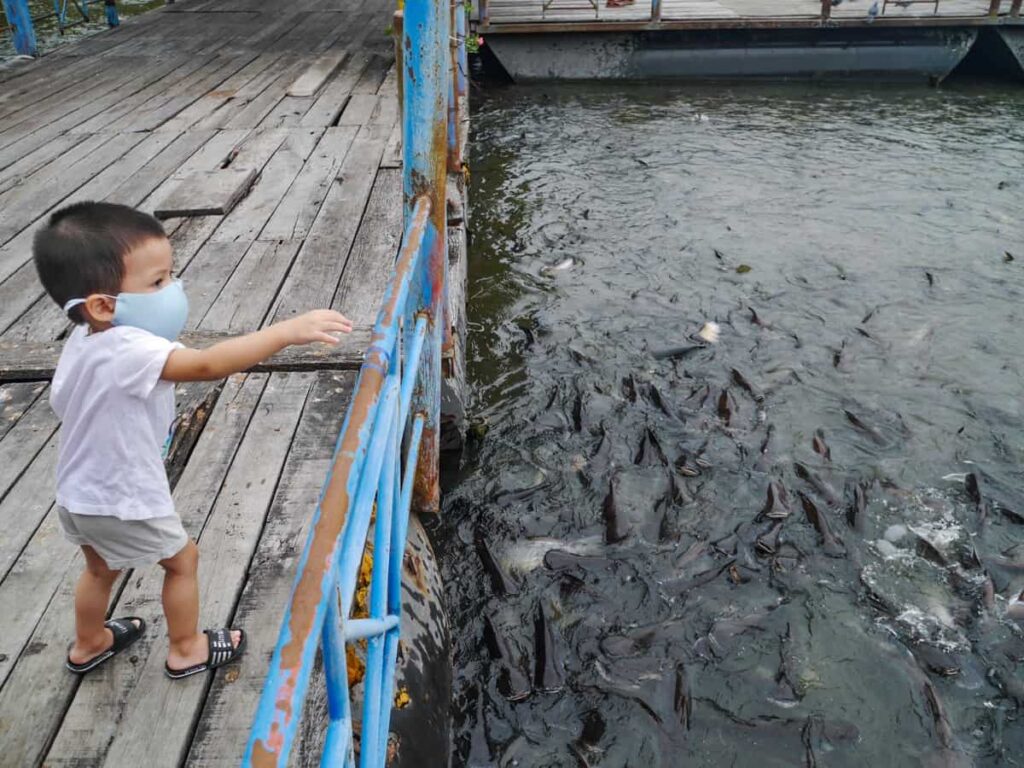
Join us in understanding the intricate process of breeding, collecting fingerlings, and ensuring the highest quality broodstock. Whether you’re a novice enthusiast or a seasoned farmer, this guide will provide insights into the fascinating world of tilapia farming.
What is Tilapia Farming?
Tilapia farming involves raising and cultivating tilapia fish for food production. These freshwater fish are popular due to their mild taste and high nutritional value. Farmers create suitable environments in ponds, tanks, or cages to nurture Tilapia from fingerlings (young fish) to fully grown adults. Farmers ensure optimal growth by carefully managing water quality, temperature, and feeding. Tilapia farming is an essential industry globally, contributing to a sustainable source of protein.
Tilapia Farming in the Philippines: Overview
The Philippines was the world’s largest fish grower through farming, producing 76,143 metric tons of Tilapia, contributing 22% of the nation’s aquaculture fish production. Tilapia cultivation remains a thriving industry, spanning about 14,500 hectares of freshwater ponds and 500 hectares of fish cages in lakes and reservoirs across the Philippines.
The country hosts over a thousand small-scale hatchery operators, producing over 500 million fingerlings annually. Yet, the industry needs more production to meet demand, particularly in the availability of fingerling seeds. The demand for fingerlings maintains the profitability of well-managed hatcheries, a venture reliant on the financial and technical capacity of the farmer.
Major Tilapia Production in the Philippines
2018 Tilapia comprised 12% of the Philippines’ aquaculture production at 277,006 metric tons. This made it the third most significant species after seaweeds (1,478,301 MT) and milkfish (303,402 MT). Despite challenges like tilapia lake virus and common pathogens, tilapia production targets were met.
In case you missed it: Milkfish Farming in the Philippines: A Comprehensive Guide
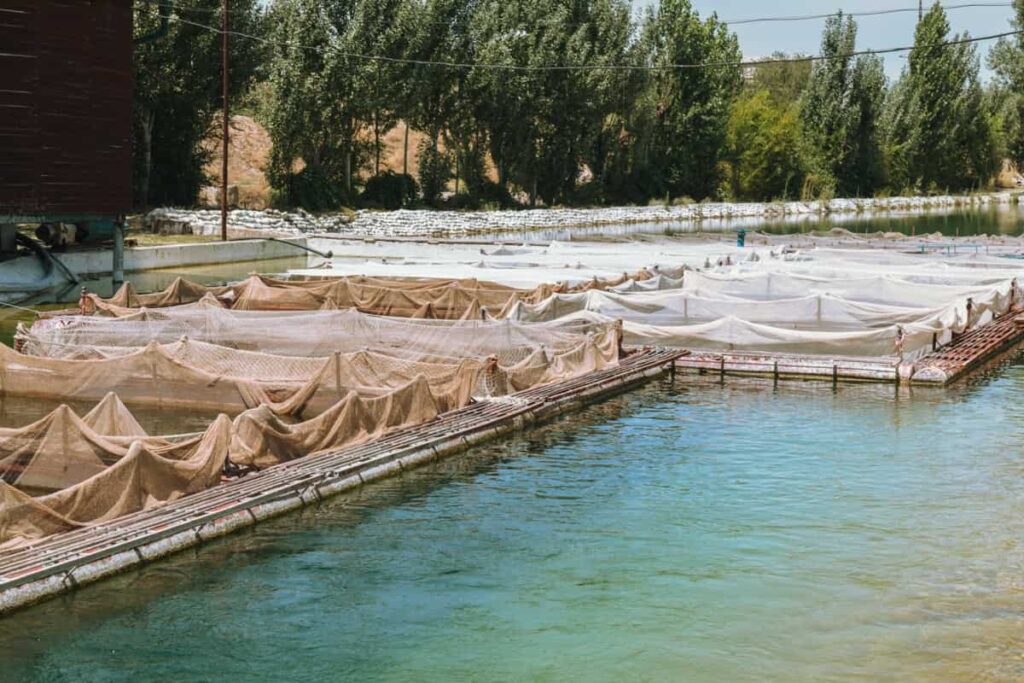
Regions III, IV-A, and I were the top producers, yielding 133,358 MT, 81,491 MT, and 16,830 MT, respectively. Most Tilapia were harvested from freshwater ponds (155,433 MT) and cages (85,440 MT). Except for the Cordillera Autonomous Region (CAR), tilapia farming was prevalent across all regions, even with minimal production from marine cages (0.44 MT) and pens (0.10 MT).
Tilapia Species and Commercial Strains
Various tilapia species are reared for commercial production in the Philippines. The Nile tilapia (Oreochromis niloticus) is globally favored for its fast growth and adaptability to warm tropical climates. It constitutes 70-80% of worldwide tilapia production. Notable genetically improved strains like Genetically Improved Farmed Tilapia (GIFT) and Genetically Male Tilapia (GMT) were developed in the Philippines.
Mozambique or ‘Java’ tilapia (Oreochromis mossambicus) is versatile in freshwater, brackishwater, and seawater. Red tilapias are hybrids from Oreochromis mossambicus and O. niloticus. These thrive in various conditions, including brackish water ponds and sea cages. The blue Tilapia (Oreochromis aureus) suits colder waters, while the black-chinned Tilapia (Sarotherodon melanotheron) has been accidentally introduced to marine waters. It’s sold at low prices due to its smaller size and less appealing taste than Nile tilapia.
Best Tilapia Farming Practices in the Philippines
Environmental and Nutritional Requirements
- Tilapias, primarily Nile tilapia, thrive best in freshwater with temperatures of 27-31°C. Other species, like Mozambique and red hybrids, tolerate saline waters.
- Water quality parameters, including salinity, dissolved oxygen, temperature, pH, and ammonia levels, must be considered.
- Tilapias feed on phytoplankton, zooplankton, and detritus. They can also be trained to eat commercial diets containing plant and animal protein, lipids, carbohydrates, vitamins, and minerals.
Farming in Net Cages
- Net cages are used for tilapia farming in lakes and reservoirs. The size of cages varies depending on the site, production targets, and technical capability.
- Cages can be fixed or floating. Fixed modules are staked in shallow water while floating modules stay afloat in deeper waters.
- Suitable sites are those with peace, proximity to markets and roads, shelter from winds and waves, availability of fingerlings, natural food, good water quality and circulation, and appropriate soil type.
Cage Module Types
- Fixed cage modules are made from bamboo poles or anahaw trunks staked into the bottom.
- Floating cage modules consist of net cages, a flotation system, a mooring system, and a frame with a working platform.
- Modules can be arranged diagonally or in parallel rows to maintain order and water flow.
In case you missed it: Mud Crab Farming in the Philippines: Evergreen Profitable Business
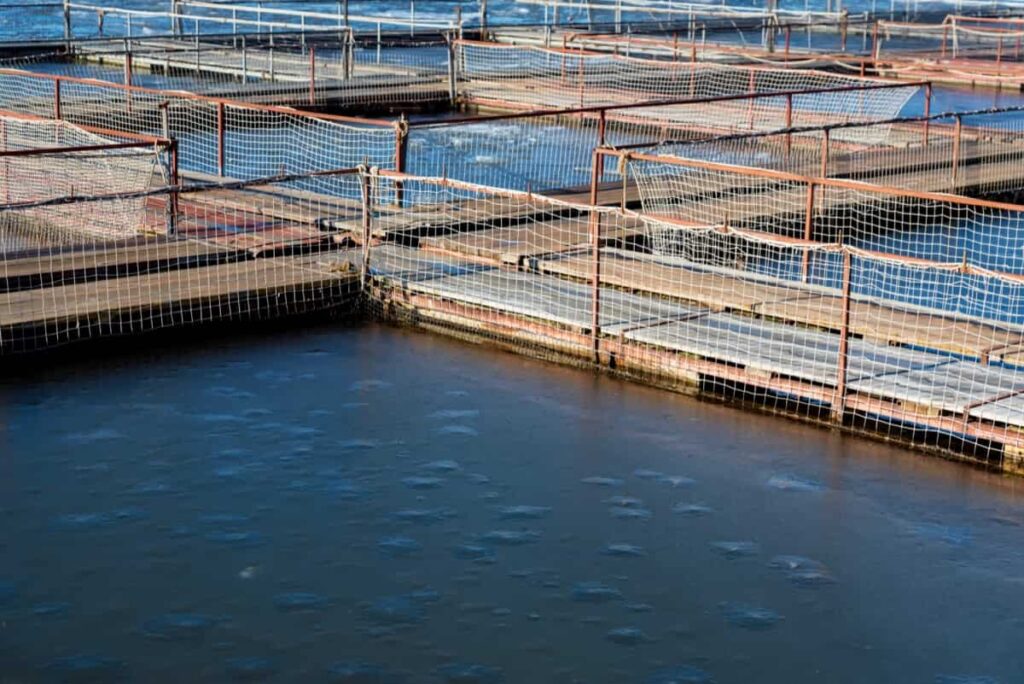
Fabricating Net Cages
- Tilapia net cages are typically rectangular. The size depends on the farmer’s capability and production goals.
- Netting materials classified by knots and mesh size are used. Types include SG net (size 12), GG net (size 14), CC net (size 17), and B net.
- Net cages are sewn from netting material using sewing machines and ropes. A removable net cover prevents fish from escaping during typhoons.
Constructing the Module
- Fixed cage modules can be made from bamboo poles or anahaw trunks. Anahaw trunks are sturdier and longer-lasting, providing a stable working platform.
- Bamboo fixed modules are 30 meters long and 12 meters wide and hold five net cages. Vertical posts are staked 3 meters apart.
- Anahaw fixed modules follow similar dimensions but use anahaw trunks for vertical posts staked 5 meters apart.
Tilapia Farming Techniques for Beginners in the Philippines
Open Pond Methods
Fingerling Collection Method: This approach applies to small backyard and large commercial hatcheries. Ponds serve as both spawning and rearing grounds. Breeders are introduced to the ponds and allowed to spawn at controlled intervals naturally. Fingerlings are collected from the 30th to the 45th day after stocking, ranging from #24 to #17 size. Breeders weigh between 50 grams and 1,000 grams.
Fry Collection Method: This method employs a smaller, shallower open pond (200-1200 m²) with a water depth of 40 cm-60 cm. After pond preparation, breeders are stocked. Fry collection commences from the 10th to the 21st day after stocking, with the pond draining afterward. Collected fry are transferred to nursery ponds for rearing into fingerling-size Tilapia. Stocking densities range from 1-6 breeders per square meter with a 3:1 to 5:1 (female to male) ratio, weighing 50g to 250g per breeder.
Hapa Method: The hapa method employs net enclosures made of fine mesh netting. A common size is 3m x 3m x 1.5, used for fry/fingerling production. It’s installed in ponds, lakes, or riverbanks with slow-moving currents. Stocking densities range from 4-5 breeders per m² at a 3:1 to 7:1 sex ratio, weighing 50g to 250g. Due to limited space, feeding is crucial, involving a commercial or formulated diet at 3-5% of the total body weight daily. After two weeks of stocking, fry collection begins, and they’re placed in hapas, tanks, or ponds for rearing.
Tank Method: Tilapia can also be spawned in concrete tanks, but ensuring dissolved oxygen is critical. Stocking density ranges from 7-14 breeders per square meter with a 3:1 to 7:1 sex ratio, weighing 50g to 1 kg. Water depth should remain between 50 cm and 70 cm. Practices for fry collection and feeding are akin to the hapa method.
Profitable Tilapia Farming Systems in the Philippines
Profitable tilapia farming in the Philippines employs cage farming systems. Utilizing natural water bodies like lakes and reservoirs, Tilapia are reared in net cages. These cages, suspended from posts or frames, allow efficient use of available resources. Tilapia can subsist on natural food in eutrophic lakes, while those in oligotrophic lakes require commercial feeds. Key factors for success include proximity to markets, suitable water quality, proper cage sizing, and access to quality fingerlings.
In case you missed it: Mudfish Farming in the Philippines: How to Raise and Grow Dalag
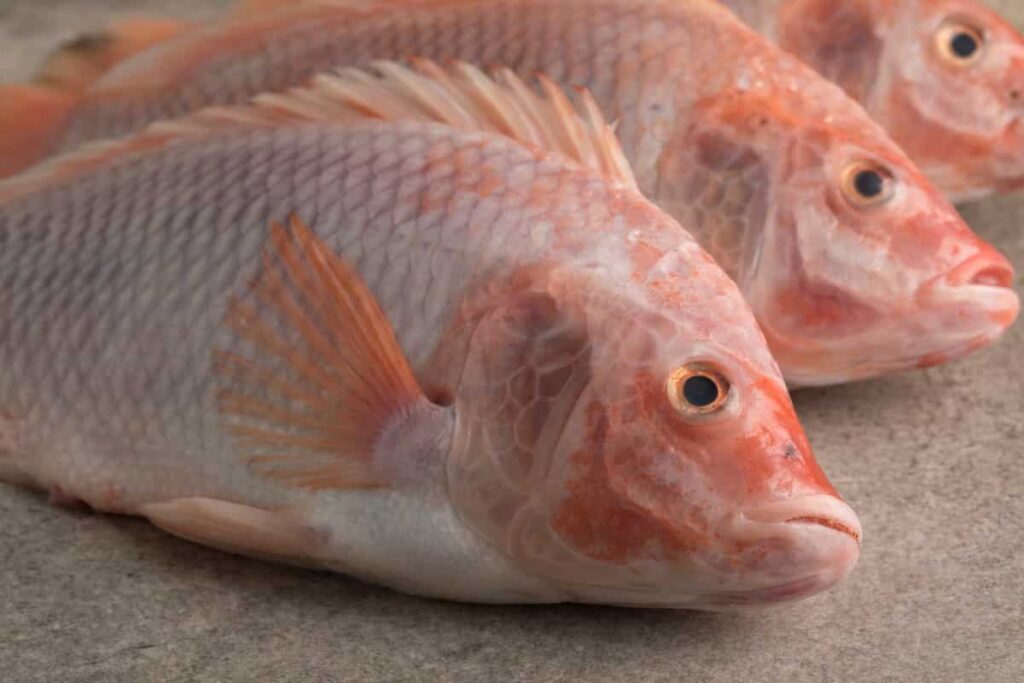
Challenges and Solutions in Tilapia Farming in the Philippines
Tilapia farming in the Philippines faces challenges like disease outbreaks, fluctuating market prices, and environmental concerns. Diseases like the tilapia lake virus can lead to mass mortalities, impacting production. Market price volatility affects profitability. Environmental degradation due to waste and excess feed can harm water bodies.
To address these, disease-resistant strains, biosecurity measures, and health management practices can mitigate disease risks. Diversification of products, value-added processing, and market linkages can stabilize income. Employing efficient feeding strategies, waste management systems, and sustainable practices minimizes environmental impact.
Tilapia Feed Management Strategies for Philippine Farmers
Tilapias are versatile eaters, consuming various foods like plankton, zooplankton, and commercial feed pellets. They eat often and digest well, which contributes to their fast growth. A recommended diet for Nile tilapia includes fish meal, soybean meal, copra meal, rice bran, cassava flour, and vitamins, ensuring balanced nutrition.
Farmers must consider water temperature, fish size, and feed quality when determining the right feeding rate. While automatic feeders are uncommon in the Philippines, they help manage feeding in intensive farming setups. Proper feed storage is crucial to prevent rancidity. In places like Taal Lake, floating feeds are advised to minimize pollution from uneaten pellets sinking to the bottom.
Water Quality Management in Tilapia Farming in the Philippines
Tilapia farming requires regular monitoring of oxygen levels, temperature control, pH regulation, ammonia and nitrite levels, water exchange, filtering and aeration, algae control, disease prevention, and regular monitoring of water parameters. These measures ensure fish health and growth, maintain optimal water temperature, and prevent stress health issues and toxicity. Regular water exchange, mechanical and biological filters, and aeration help remove pollutants. Proper water quality reduces disease risk and stress.
Disease Prevention and Control in Philippine Tilapia Farms
Tilapia farms in the Philippines often face disease challenges. One common issue is Streptococcus bacteria, causing infections and deaths. Farmers must maintain clean water, follow proper stocking densities, and ensure good nutrition to prevent this. Another concern is parasitic infections like Ich, which cause fish to have white spots.
Regular pond cleaning, quarantine for new fish, and proper hygiene are essential to avoid this. Viral infections like Tilapia Lake Virus (TiLV) can also occur. To prevent it, farmers should source disease-free fingerlings, avoid using infected water, and promptly report outbreaks.
Seedstock Procurement, Transport, and Stocking in Tilapia Farming
The success of tilapia farming hinges on quality seed stock. Farmers can source these from reputable hatcheries, licensed farms, or research institutions. Superior breeding management is vital as genetically inferior breeders lead to slow growth, deformities, and diseases in fingerlings. Quality fingerlings exhibit traits like robust bodies, normal color, and efficient feed conversion.
Tilapia hatchery operations demand expertise in broodstock management and relevant information such as parental cross and survival rates. Before transport, fingerlings require 24 hours of fasting and conditioning in aerated water. Adequate oxygen and controlled water temperature during transport are essential. Regulatory compliance, like securing health certificates, is crucial.
In case you missed it: Seaweed Farming in the Philippines: Best Practices and Techniques
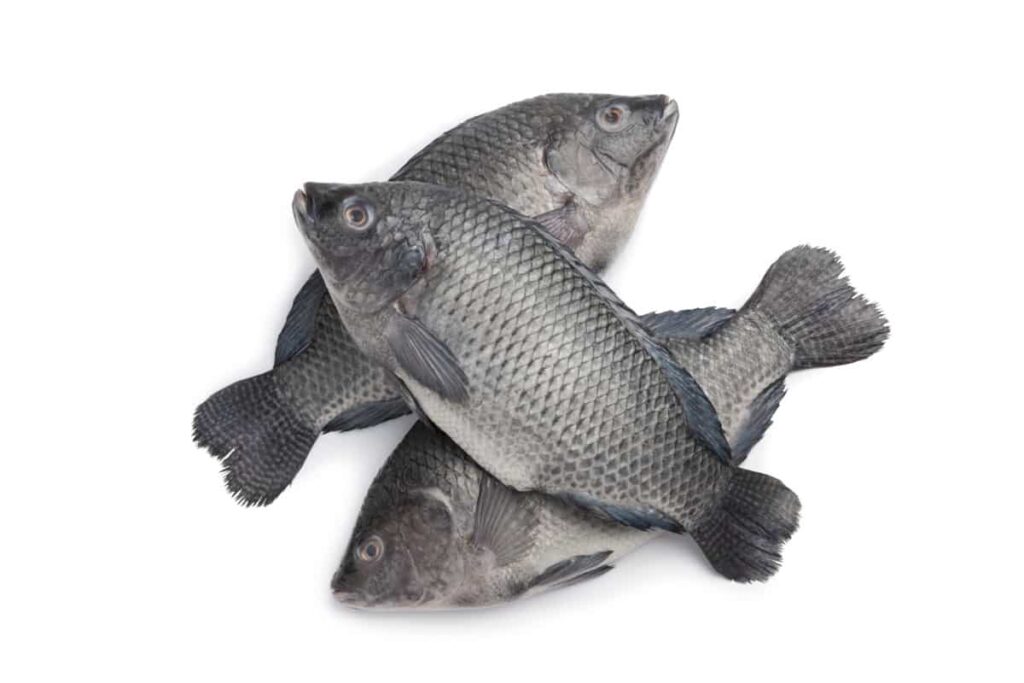
Upon reaching the farm, fingerlings are introduced into cages after acclimatization. Stocking densities can vary based on water conditions and feeding practices, and fingerlings may need very little care in plankton-rich environments. Observing the fish’s eating habits and adjusting feed amounts accordingly is recommended. Automated feeders can be useful for precise feeding in intensive farming settings. Storage of fish feeds should be optimal to prevent spoilage and maintain feed quality.
Regular cage inspections, cleaning, and preventive maintenance are essential for successful management. The net cages must also be protected during bad weather. Harvesting depends on market demand and fish size, usually within 150-200 grams in the Philippines. Larger Tilapia may be partially harvested to promote growth in the remaining fish. Proper lifting techniques are employed during harvest, involving multiple individuals and careful handling of the net cages.
Government Regulations and Policies on Tilapia Farming in the Philippines
Premium broodstock can be sourced from Research and Development Institutions, particularly the National Freshwater Fisheries Technology Center. Ensuring quality breeders involves preventing the introduction of different tilapia species, especially Tilapia mossambica, into the brood pond to prevent genetic contamination. Moreover, fish with questionable traits should be removed, random introduction of breeders from diverse sources should be avoided, and the brood ponds should be fully drained and cleared during pond conditioning to prevent inbreeding depressions.
Effective Hatchery Management in Tilapia Farming
Maintaining detailed farm records, encompassing both inputs and outputs, is of paramount importance. Record keeping is a valuable tool for informed decision-making, providing insights into various aspects of the operation. Filling the pond with water is a fundamental step in the hatchery management process.
Fertilization and feeding play a significant role in the growth of fish. Fertilizers stimulate the growth of plankton, which serves as the natural food source for the fish. Fertilization should be considered when nitrates and phosphates are at low levels and the water is either transparent or turbid with suspended soil particles.
However, fertilization might not be recommended in soils containing ample nutrients to support plankton bloom. At NFFTC, an organic fertilizer is applied basally at a rate of 2,000 kg per hectare, with a monthly application of 3,000 kg per hectare. Feeding the breeders is particularly emphasized in the hapa and tank methods of hatchery production and is also significant in the goen pood technique.
The maintenance of a daily logbook is crucial. This logbook records daily observations, including the number of mortalities, draining activities, stocking dates, and other relevant records for future reference. Additionally, the status of stocks is routinely monitored through quarterly inventory checks, and the information is meticulously recorded.
Routine activities form an integral part of effective management. These activities are diligently observed and recorded daily for ponds and tanks. Such activities include checking the water level (ensuring it’s at least 40 cm), monitoring fish behavior (such as fish gasping for oxygen at the water surface), inspecting water supply points (inlet and outlet structures), and assessing the general color of the pond water.
In case you missed it: Koi Fish Farming in the Philippines: A Profitable Business
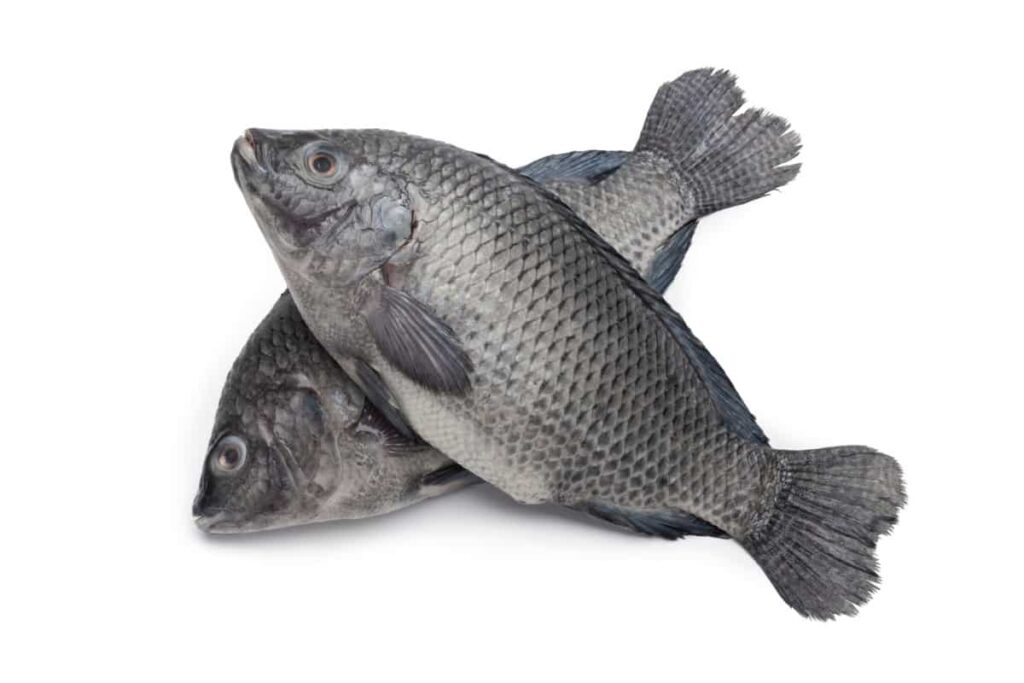
Conclusion
This comprehensive guide to Tilapia farming in the Philippines underscores the significance of meticulous pond management, appropriate fertilization, and vigilant record-keeping. Through these practices, optimal growth and health of the Tilapia population can be achieved, ensuring a successful and sustainable farming venture.
- Crops Grown in Summer Season: Best Choices for Summer Gardening
- Organic Pest Control for Tomato Farming
- How to Maximize Sheep Farming Profit
- Broccoli Varieties: Choosing the Right Cultivars for Your Farm
- How to Raise Pigs in Your Own Backyard: A Comprehensive Guide
- Budget Friendly Sheep Shed Ideas: Cheap and Low-Cost Tips
- How Much Do Cattle Farmers Make: Revenue Streams in Cattle Farming
- Management Pests and Diseases in Your Cotton Field
- Sheep Farming Business Plan for Beginners
- Aquaponic Farming at Home: A Step-By-Step Guide
- Profitable Village Farming Business Ideas in 2024
- High-Yield Aquaculture: Fast-Growing Fish for Farming
- Effective Fish Pond Construction Techniques for Beginners
- Irrigation and Water Management in Pineapple Farming
- Blossom to Harvest: Mastering Flowering and Pollination in Papaya Farming
- Pig Fattening Essentials: From Selection to Sale for Beginners
- Raising Wagyu Cattle: A Complete Guide for Premium Beef Production
- Soil Types and Their Water Holding Capacity
- Optimizing Irrigation Schedules for Coconut Groves for Enhanced Yield
- Espresso Your Garden: Coffee Grounds for Healthier Acid-Loving Plants
- The Best Soil Mix for Snake Plants: How to Mix Your Own Snake Plant Soil
- Green Thumb Success: Expert Tips for Cultivating Greenhouse Beans All Year Round
- Bloom All Year Round: The Ultimate Guide to Indoor Hyacinth Care
- Eco-Friendly Gardening: How to Make Liquid Fertilizer from Kitchen Waste
- Ultimate Guide to Grow Anise in Pots: Explore Seed Propagation to Harvesting
- Guide to Raising Chester White Pigs: Discover Breed Facts to Growth Management
- Mastering the Elegance: The Ultimate Guide to Weeping Cherry Tree Care, Planting, and Maintenance
- Ultimate Guide to Planting Garlic in Grow Bags: Growing Strategies for Beginners
- How to Fix Spider Plant Leaf-Related Problems: Natural and Organic Remedies
- 10 Reasons Why Your Tulsi Plant is Shedding Leaves: Home Remedies and Solutions
- Optimizing Growth and Yield: The Advantages of Palm Bunch Ash Fertilizer
- Utilizing Neem Oil Extract as a Natural Pesticide for Hydrangea
- From Soil to Harvest: Various Ways in Which Farmers Can Use AI Tools
- Steps to Encourage and Induce Citrus Flowers: A Comprehensive Guide
- How to Fix Snake Plant Leaf-Related Issues: Natural and Organic Remedies
- Transform Your Garden into a Fragrant Oasis with Raat Ki Rani (Night Blooming Jasmine)
